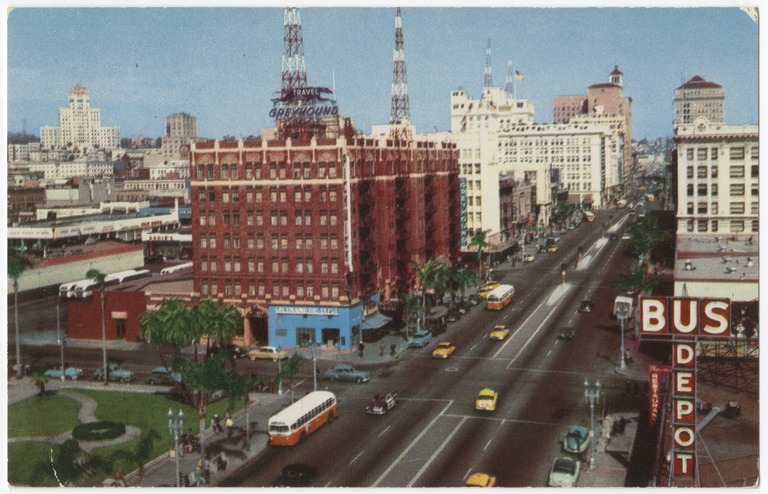
It was generally thought that 19th Century American tourists often sought out natural wonders “because the nation’s cities lacked the historical relics and cultural institutions that made European cities so attractive.” While there is some truth to the matter, there was also a large push by Western Boosters and American railroad companies to “See America First,” which often highlighted the America’s natural landscape as a part of the railway experience.
The postcard on the right highlights the attributes of early tourism. The image on the postcard features a beautiful valley which, to many from the Great Plains or large East Coast cities, would be an awe-inspiring and unusual sight. The train laid along the back of the image ensures that the view in the image is accessible through travel.
Following the efforts of early tourism, as the 20th century began, WWI closed off to Europe to the American tourist market. The exploitation of natural wonders was soon accompanied by the rise of urban tourism. Urban tourism is characterized by urban space, leisure, and commercialization present in the developing American cities.

The postcard above looks up Broadway Ave. in downtown San Diego. The cars and buildings highlight the developed and modern aspects of San Diego. The palm tree lined streets remind viewers of the coastal environment solidifying this city as different from east coast cities.
As the 20th Century progressed many Americans traveled nationally as the nation saw itself once again entering, and exiting, an international war fought in Europe and the Pacific. After the Second World War concluded three factors contributed to the postwar rise of US tourism: long-term trends in the economy, union support of vacation time, and the rise of car culture. The United States economy underwent considerable changes; during the war spending was restricted which severely limited leisure and recreational activities, and following the war a renewed sense of financial freedom contributed to a rise in tourism. Additionally, many unions encouraged time off and travel within their Collective Bargaining Practices. Finally, interstate road conditions improved and manufacturers shifted away from wartime use of factories to vehicle production.
The commercial below highlights the changes in midcentury America focusing on size, space, and ability to travel.
